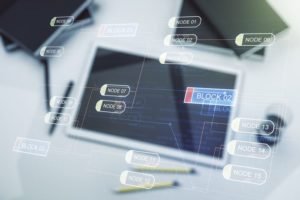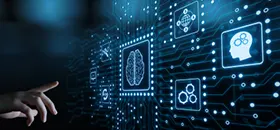Last updated on April 6th, 2024 at 08:35 pm
Deep learning is a rapidly growing topic within artificial intelligence (AI). It focuses on developing algorithms that allow computers to learn from data. We can use Deep learning for various tasks, including image recognition, language translation, and autonomous navigation. As a result, deep learning professionals are becoming increasingly important as the need for AI grows.
In this blog post, we'll look at some of the key deep learning methods AI practitioners need to apply to be successful. Let's first understand,
What Is Deep Learning?

Deep learning is a powerful subset of artificial intelligence (AI) that enables computers to learn complicated tasks and processes. It is the basis for several cutting-edge AI applications, including facial recognition and self-driving automobiles.
As AI practitioners continue to explore the depths of machine learning and develop a deeper understanding of its capabilities. It is essential to understand the different methods and techniques used in deep learning. Now let's look at the key deep learning methods AI practitioners need to be familiar with:
1. Neural Networks and Backpropagation.
One of the foundational elements of deep learning is neural networks. Neural networks are essentially a system of interconnected nodes or "neurons". They work together to process input data to make decisions or predictions. This type of network is modelled after biological neurons found in the human brain. This network has been used in various forms since the 1940s.
For neural networks to learn, it is essential to train using backpropagation. It is a process that propagates errors backwards through the network to adjust weights and biases accordingly. This process allows neural networks to "learn" from their mistakes over time.
2. Convolutional Neural Networks.
Deep learning algorithms known as convolutional neural networks (CNNs) were created expressly for image identification applications. CNNs use convolution layers with filters that recognise image patterns more efficiently compared to traditional neural networks.
These layers are combined with pooling layers that reduce the size of images while still preserving essential features. The combination of these two layers makes it possible for CNNs to identify objects within an image with high accuracy rates accurately.
3. Recurrent Neural Networks.
Recurrent neural networks (RNNs) are another type of deep learning algorithm. They are often used when dealing with sequential data such as text or audio recordings. Unlike traditional neural networks, RNNs have feedback loops that allow them to remember information from previous inputs. That accurately predicts future outputs based on current inputs and past observations.
This makes RNNs ideal for language translation and speech recognition tasks. They are useful where understanding context is essential for accurate results.
4. Autoencoders.
Autoencoders are a type of artificial neural network used for unsupervised learning. Autoencoders reduce the size of data by representing it in a smaller format while retaining the information. This is especially useful for image recognition, where it can compress data without losing essential features.
Autoencoders are also well-suited for anomaly detection. They can identify data points significantly different from the rest of the dataset.
5. Generative Adversarial Networks.
Generative adversarial networks (GANs) are a kind of deep learning algorithm used for unsupervised learning. Unlike traditional machine learning algorithms, GANs use two networks—a generator and a discriminator. These networks interact against each other to improve the performance of both networks.
The generator produces data that it attempts to trick the discriminator into believing is real. On the other hand, the discriminator works to identify which data is real and which is generated. This competition helps both networks become more accurate over time, improving performance on various tasks.
6. Transfer Learning.
Transfer learning is a deep learning technique that leverages existing models to train new models quickly. This is especially useful for tasks with limited data, as it allows the model to learn from processed and labelled data.
Transfer learning can also be used for various tasks, such as image recognition and natural language processing. This is because it allows the model to take advantage of existing networks that have already been trained on similar tasks.
7. Long Short-Term Memory (LSTM) Networks.
Long short-term memory (LSTM) networks are a type of recurrent neural network designed to remember long-term dependencies in sequential data. Unlike traditional recurrent neural networks, LSTMs have feedback loops that allow them to store and access information from previous inputs.
This makes LSTMs ideal for language translation and text generation tasks. It is useful in situations when knowing context is critical for correct results.
Conclusion
Deep learning is an ever-evolving field within artificial intelligence (AI). There are many different methods AI practitioners need to master to stay competitive in this space. Understanding how these methods work will help practitioners stand out when applying for AI jobs. Joining the Data Analytics course with placement can help develop new projects related to deep learning technology today!









